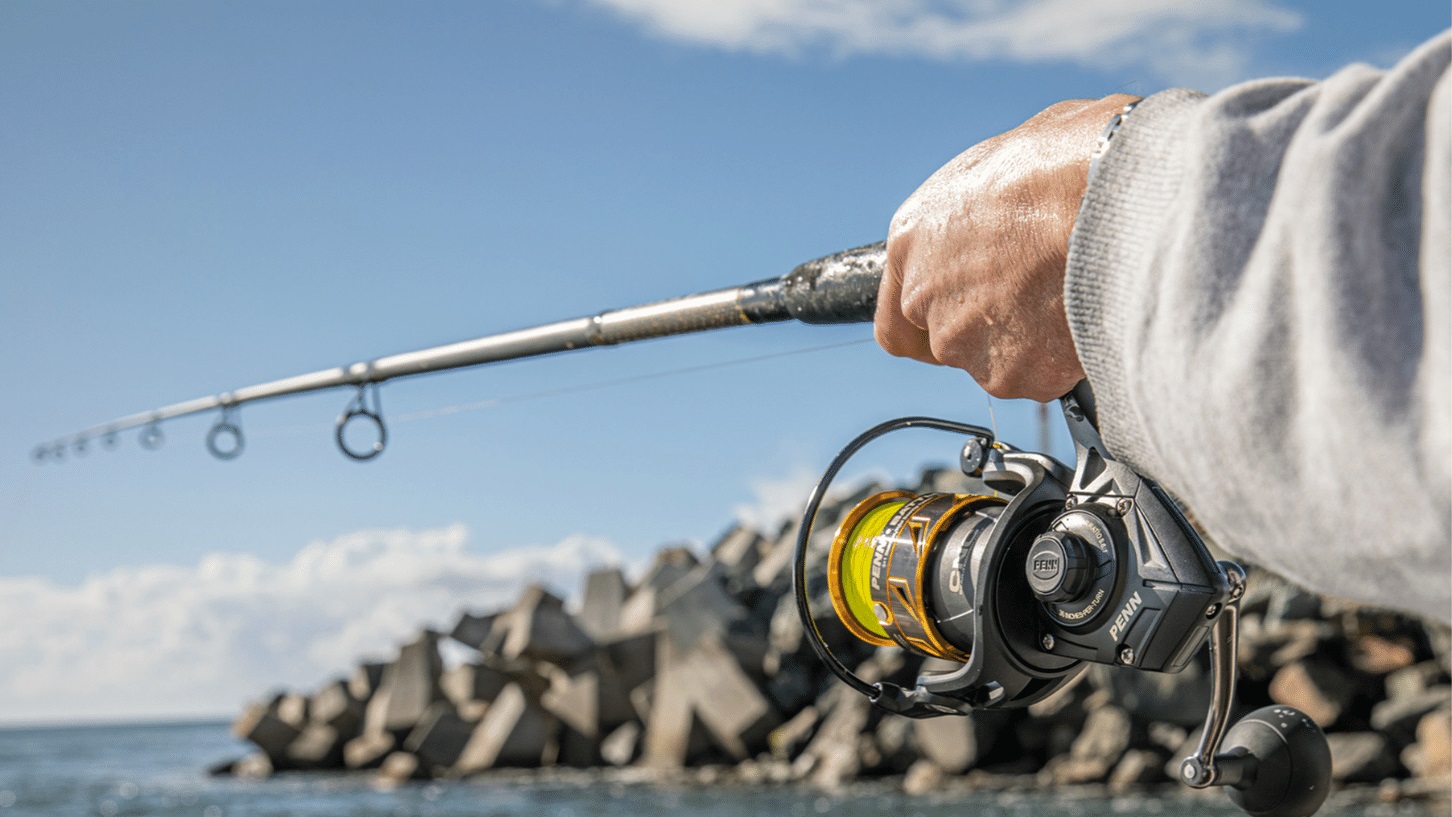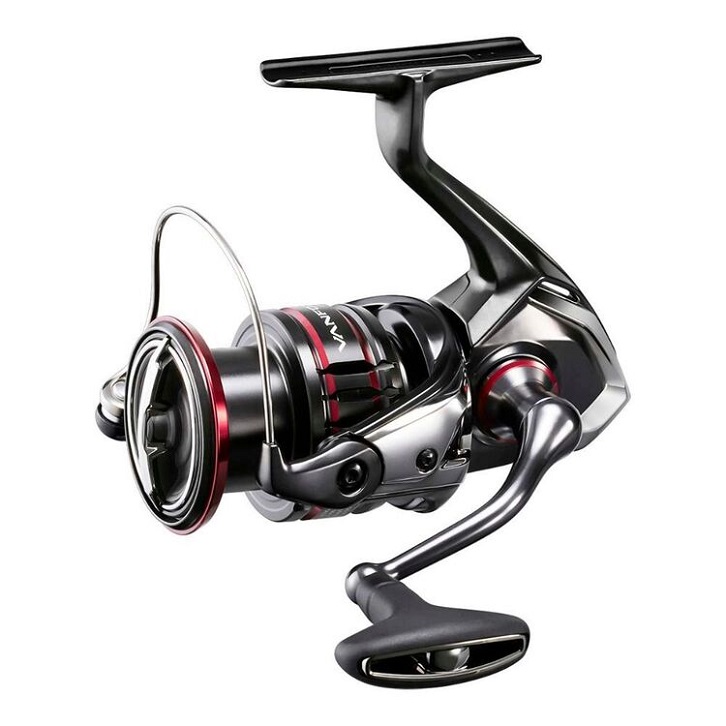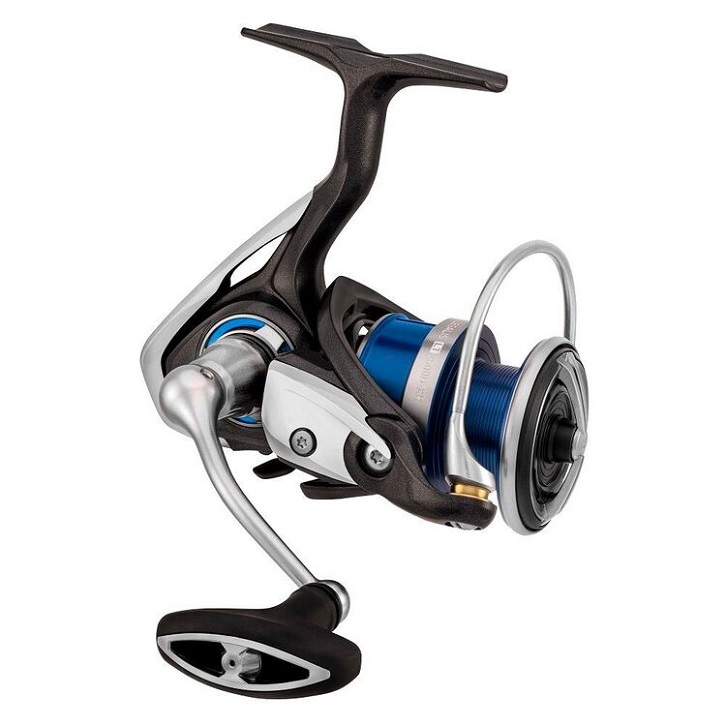| Your browser is not supported. | ||
|
Please browse our site using any of the following options:
| ||
How To Choose a Spinning Reel

Spinning reels are arguably the most common, versatile and easy to use fishing reels on the market.
From estuary and bluewater pursuits to freshwater, small stream finesse situations, spinning reels are often the go-to for many anglers. With that in mind, you could do a lot worse than starting with a spinning reel if you're new to fishing, or just looking for a solid option that offers a lot of versatility.
Deciding which spinning reel to buy can seem a little daunting to newcomers and even some more advanced fishos, purely because of the vast array of options on the market. And with ever-evolving technology coupled with greater demands from anglers, the quality and options continually increase.
So, while myriad sizes and variations exist on the market, and there are a number of factors to consider before choosing a spinning reel, it's not rocket science, and once you get your head around what to look for, you'll not only understand which spinning reel is best for you, you'll also become a more proficient angler.
What is a spinning reel?
Spinning reels are mounted below the rod and are open-faced, meaning the entire spool is visible, unlike those in baitcaster reels. The spool axis sits parallel to the rod, which makes for a comfortable proposition to fish with all day.
A bail arm allows line to free fall from the spool when opened, and vice versa once closed. When line is retrieved onto the spool, the bail arm, combined with a line roller, work to ensure line fills the spool evenly, so there's no need for the angler to guide the line on with thumb or finger, as is the case when using overhead reels that don't feature level wind.


Spinning reel components
Let's break it down and look at the different components that make up a spinning reel.
Drag
Spinning reels feature an adjustable drag system which is usually located on the front (top) of the reel and is used to increase or decrease the amount of friction (drag) on the line.
Having the right amount of drag applied to the line can make the difference between landing a fish of a lifetime and telling another tale of 'the one that got away', as it allows the fish to pull line when needed, without the line breaking altogether.
A reel with an easily adjustable drag system will be much easier to use if you're just starting out because it will let you make quick adjustments on the fly if you need to. This is especially handy when fishing in areas where reef and snags abound.
The best setting for the drag depends on the weight of the line, and it's something you'll get used to as you go. As a general rule of thumb, the drag should be around a quarter of the line's breaking strength.
Spool
The spool is the cylindrical-barrel like component where the line lays and moves on or off depending if you're casting or retrieving. The spool on a spinning reel will move up and down with each turn of the handle, which allows the line to be distributed evenly along.
Handle
Many spinning reel handles are reversible, meaning you're able to attach it to either side of the reel - which can be very handy if you're a lefty! Handles themselves can also differ in shape and size, so it pays to get a feel for the reel in your hand, to ensure it will be comfortable to use all day long.
Line roller
This is a small but important component, as it controls how the line behaves. Sitting between the spool and the bail arm, the line runs over the line roller as it moves on or off the spool whenever the bail arm is engaged.
Bail arm
The thick metal wire that runs around the spool and holds the line in place is called the bail arm. As you retrieve the line, the bail arm spins around the spool and winds the line back on evenly. Flip the bail arm over (back) when casting so the line can move off the spool freely.
Seals
More and more decent saltwater reels, and even some higher-end freshwater reels, now feature component seals. These protect components such as bearings and drag systems against damage and corrosion and extend the life of the reel.
Ball bearings
The number of ball bearings in a reel determines how smooth it is to retrieve. While reels with higher numbers of ball bearings are preferable, they are also more expensive. Many anglers suggest that five bearings will give you a smooth enough retrieve at an affordable price.
Another thing to be mindful of, when looking at ball bearings, is that if a cheap, non-reputable brand boasts a high number of ball bearings, there's a good chance they're of poor quality. Like most things in life, you get what you pay for and if it sounds too good to be true, it likely is.
Gear ratio
The gear ratio determines how fast or slow the retrieve is on the reel. And the best gear ratio will depend on what style of fishing you want to do. The ratio is expressed by how many times the bail rotates for every turn of the handle. For e.g., a 5:1 gear ratio indicates the bail rotates five times for every turn of the handle. A 5:1 gear ratio is also a good choice for an all-round reel.
Further to that, if you're looking for a reel to use in high-speed spinning situations, such as when chasing pelagics on lures, you would be best served with something over 5:2:1, whereas anything below 5:1 is generally considered low and suited to a lot of bait fishing situations.

What factors go into determining the right spinning reel
The type of spinning reel you choose will depend on a number of factors such as the environment you plan to fish in, size and whether you already have a rod to pair it with. Let's take a look at what to consider.
Size
Using the right size reel (and overall outfit) for the type of fishing you're doing is imperative if you want to make catching fish a habit rather than an exception.
If the outfit is oversized, it will be uncomfortable and cumbersome to fish with and will likely impede the action of a lure. If a fish does bite, you won't have the same level of sensitivity as a smaller outfit and you may not feel the fish on the line.
Line capacity is a good guide to go by to determine the size of the overall outfit.
Manufacturers will display line capacity information and suggested line weight on the reel so check that out before making your purchase. Also research your target species to find out what line rating is recommended and use that as your starting point to work back from.
Here's a general guide to get you started:
- 1000 to 3500 (10 - 35). Small reels most often used for a lightweight 6-7ft rod targeting small fish species. The line weight for these smaller reels usually ranges between 2-10lb monofilament or 4-14lb braid.
- 4000 to 5500 (40 - 55). Medium sized reels likely for a 6-7ft snapper or barramundi style rod. The line weight usually ranges between 8-14lb (4-7kg) mono or 8-25lb braid.
- 6000 to 9500 (60 - 95). Large reels to suit bigger rod sizes including heavy-weight boat rods or surf rods. Line weight range is 12-25lb (6-12.5kg) mono or 12-30lb braid.
Matching your reel with a rod
One thing to bear in mind is that not all reels weigh the same, even if they're the same size. This is due to the materials used in construction. When pairing a reel with a rod make sure that it balances. Typically speaking, you should be able to tell if the combo is balanced by placing it on your index finger (just above the rod handle grip) and it remains relatively horizontal.
If the rod/reel combo is unbalanced, it will be top or bottom heavy, uncomfortable in the hand and potentially difficult to use.
Spinning reel materials
The materials your reel is constructed from will impact its weight, where it can be used and its durability. Generally speaking, reel bodies are made up of either aluminium, graphite, carbon fibre or a combination. These materials are chosen due to their lightweight nature and rigidity.
While aluminium is stronger, graphite and carbon fibre are lighter in weight, so that's something to consider if you plan to fish for long periods of time, or if you will be holding the rod constantly, such as while lure fishing. Graphite and carbon fibre are also more corrosion resistant so are hardier in saltwater environments.
Regardless of what material your chosen reel is made from, it's highly recommended to clean it regularly, especially after fishing in saltwater.
Styles of fishing
As we've already touched on, one of the key factors to consider when buying a reel is the style of fishing you plan on doing, as well as the species you intend on targeting. Smaller species that don't pull a heap of string, such as trout in the fresh and whiting in the salt, a 1000-2500 reel loaded with 2-10lb line will suffice.
On the other hand, if chasing big fish known for their fighting prowess, such as giant trevally or any number of reef brawlers, you'll want a 5000-10,000 sized reel capable of holding a decent amount of 30-50lb braid coupled with an even heavier leader.
If the majority of your fishing is undertaken in saltwater, do yourself a favour and spend more dollars on a reel with seals. While the upfront expenditure will be higher, you'll end up saving money by not needing to upgrade every few years.
If you're going to be bait fishing from a boat or off the beach, weight's not going to be too much of an issue, but you'll want something that will be big enough to handle the species you're targeting.
Once you know what you're looking for, a bit of research on the environments and species you plan to target, should set you up with the knowledge you need to get yourself a suitable reel for the job.
Enjoy yourself
Whatever reel you end up with, remember that the primary reason you're heading out on the water is to have a good time. As far as we're concerned, there are few better pastimes than fishing.
So relax, enjoy yourself, and the fish will follow!